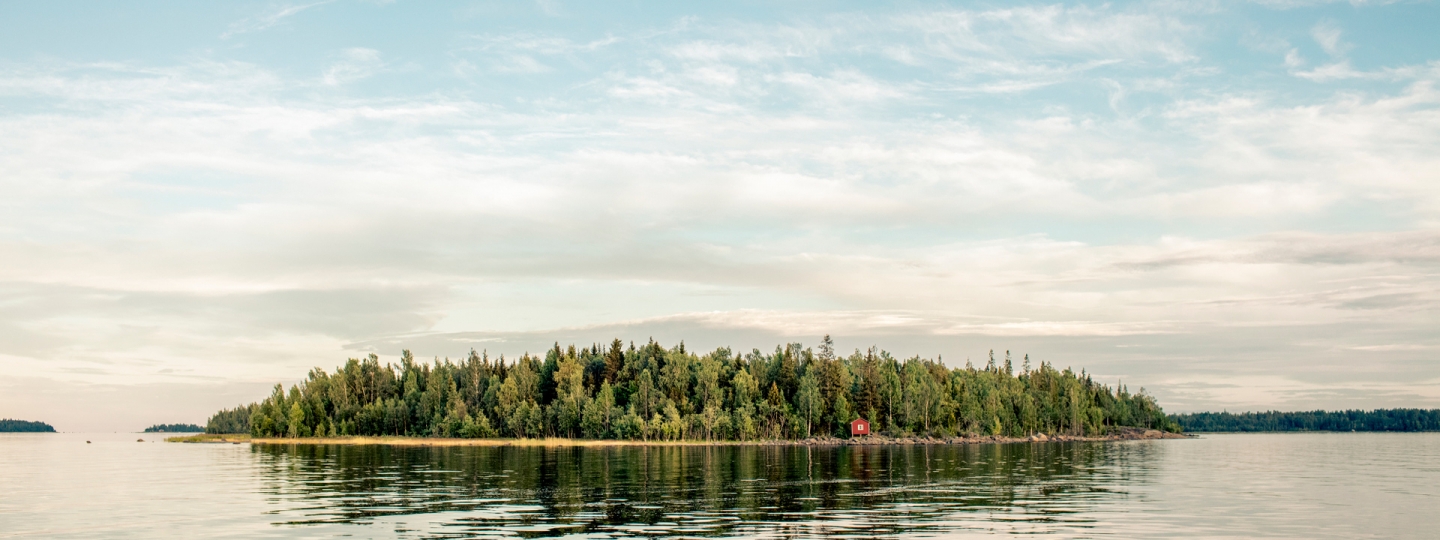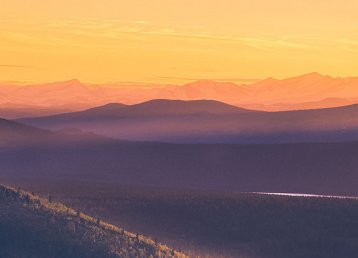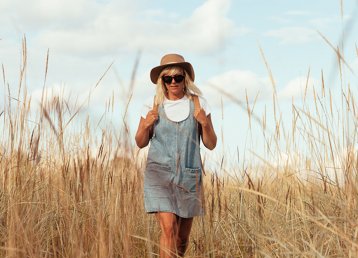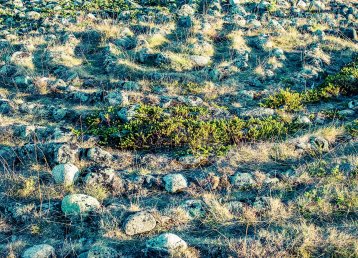The year was 1944. The world was at war, and allied forces had just carried out Operation Neptune, D Day. At home in Jävre, electrician Elof Söderberg wandered about, wondering what to do with his recent purchase, four hectares of sandy beach on Piteholmen, on the outskirts of Piteå. Back then, land was cheap, and a sandy beach had little value since it produced no timber. Elof, the electrician, was also an entrepreneur, and he soon built a few rental cabins and opened a kiosk that sold ice cream and soft drinks. The war ended, and the future suddenly looked brighter. For three consecutive years in the early 1950s, Piteå was Sweden’s warmest place in summer, which soon earned this bathing resort the name “the Riviera of the North”. Fortune smiled upon Elof, and people flocked to his beach. Around what was once Elof Söderberg’s ice cream shack, Pite Havsbad has grown to become a full-scale bathing resort and one of Swedish Lapland’s strongest brands. In the warmth of a sunny afternoon, the familiar smell of newly lit barbecues drifts among the caravans and motor homes, and the sound of a bottle being opened is heard from time to time.
The summer weather
When speaking of summer, talk of the weather is inevitable. It is an irrefutable fact that the coast of the Bay of Bothnia often tops the charts for the most hours of sunlight in Sweden. This isn’t something that we at Swedish Lapland, a regional tourism organisation, have invented; instead, this is backed by official data from the people at SMHI, the Swedish Meteorological and Hydrological Institute, who tell us that summer is, quite simply, best here. And so it has been since the 1950s of Elof Söderberg.
One afternoon, perhaps inappropriately dressed in a flowered shirt, shorts and sandals, I drop in at Bistro Norrland, in Luleå. Earlier in the day, I took the first boat to Klubbviken, Luleå’s most-frequented bathing beach. The boat ride out from Södra Hamn is a good introduction to tour-boat travel in the archipelago. But that is a whole different adventure in itself. Among young families and sweethearts, I have been relaxing with a book on the beach. When it gets too hot in the sun, I seek refuge under a café umbrella at the restaurant, where a summer salad and a glass of Chablis put me in an even better mood. To be without food, good food, and struggle with a bad book are two things you should avoid if you’re looking for the ideal summer. On the other hand, shade, Chablis and a book by Patience Gray can whet the appetite for more.
Island hopping
Head off into the archipelago of Swedish Lapland on a hot summer’s day. Find a secluded beach with miles of sand, almost just to yourself, and take a dip in the Baltic Sea. Some days don’t need to be more complicated than that. Then repeat.
Now and then
At a certain age, you start to remember, and at all ages, your memories become an attempt to make life a bit more exciting than it really was. It could be the time you scored the decisive goal in a division-four football match, something no one has given a thought to since then. About the love you’ve had and the love you’ve lost. Or a friend of a friend who became famous. Some might tell you that when they were in school, they were at the top of the class, but that the bank clerk job they now hold is no reflection on their cleverness; they simply opted not to “pursue a career”. A noble thought; if only it were half true. Of course, that’s okay, as long as they keep it to themselves. It makes for a rather dull dinner conversation.
"So, off I go out into the archipelago, equipped with charcoal, matches and a little food for the evening. I know of nothing better for a summer evening."
That is probably why I prefer to eat alone since it allows me to concentrate on what is most important: the best recommendations from the menu. Fredrik at Bistro Norrland, whom I have come to trust (mostly because he’s a great skier), says he still has a couple of bottles of Pinot Noir from Russian Valley and that these are well worth the money because they are “quite simply, damned good”. Sometimes it’s better with a sommelier who understands people rather than wine. Someone who can explain in such a way that even someone like me, who seldom gets mired down in terroir, blueberry notes and burnt leather, can understand. Fredrik is right; the glass of pinot is superb, and I make a mental note to reserve the remaining bottle for tomorrow. After all, summer will continue. Then I order a well-aged entrecôte, one of my few guilty pleasures in life. I’d rather eat the cow than what the cow eats. Yes, I know. That isn’t much to brag about.
The lost highway
If you take a look at the map, you will notice that relatively few cities in the north are really close to the sea, along the coastal part of what we call the Bay of Bothnia archipelago. Most are a bit upstream from the mouth of the river from which their place names derive. Piteå and Luleå are two exceptions. Here, European route E4 does not run straight through the city centre; you have to make a detour to get here. Sometimes I wonder whether this is good or bad. As author Wendell Berry has already noted, we and our senses were not made for travelling on the motorway. We weren’t born moving at 120 kilometres an hour. In summer, more so than at any other time, this is important to remember. In summer, it’s better to go your own way and be “just another guy, on the lost highway”. There, on the fringe and beyond the mainstream, is where everything exciting appears and comes to life.
I am heading north from Skellefteå. I have travelled around the southern part of the destination for a few days, visiting farm-stays and farm-gate shops. In the trunk of my car are cheeses from Svedjan, half a kilo of pork butt from Järvtjärn’s free-range pigs and a side of lamb from Bergsåkersgården. Just to be on the safe side, I also managed to fit a few fresh lamb sausages, a couple of baking potatoes and a six-pack of Kallholmen into my cooler. I think I’m going to manage pretty well in every possible way again this evening. I call ahead to Jeanette at Pite-Rönnskär, but the pilothouse is fully booked for the night. But when I ask if it is possible to buy breakfast for the following morning, she assures me it will be perfectly all right. So, off I go out into the archipelago, equipped with charcoal, matches and a little food for the evening. I know of nothing better for a summer evening.
Lighthouses
At Pite-Rönnskär, a red Heidenstam lighthouse towers over the picturesque fishing village. At 37 metres tall, this is Sweden’s tallest Heidenstam-type lighthouse. There are four of Nils Gustaf von Heidenstam’s lighthouses in Swedish Lapland: three Heidenstam- type lighthouses, plus the fourth, constructed from timber on Malören in the outer rim of the archipelago. After Gustaf, who was chief engineer at the Swedish pilotage service, built his first timber lighthouse on Malören, he wondered if there was a better, faster way to build lighthouses. That’s when the Heidenstam design was born. It consists of an open iron-pillar tower secured with supports; the design had enormous advantages. Heidenstam’s lighthouses could be prefabricated and then shipped out to the site and quickly assembled. Such a lighthouse could be raised in a summer or even faster. His contribution to Swedish maritime safety cannot be underestimated. Resembling something made from a giant Meccano set, the lighthouses could also be disassembled and relocated. Such was the case with, among others, the lighthouse here on Pite-Rönnskär, which was first erected on Sandhammaren, and the lighthouse which can be seen near the E4 in Jävre, which once stood on Skagsudde.
Gustaf designed this master plan for equipping the Swedish coast with lighthouses to make our waters safer. Even modestly well-read Swedes will recognize the name Heidenstam. Gustaf’s son, Verner, part of the neoromanticism movement of the 1890s, was among those who shaped Swedish literature around the turn of the 19th and 20th centuries. Other prominent figures included Selma Lagerlöf (Nobel Prize in Literature 1909), Gustav Fröding and Albert Engström. Verner von Heidenstam was awarded the Nobel Prize in Literature in 1916, which wasn’t bad for someone who had dyslexia and achieved poor school grades.
A sunshine story
This is the sunshine story of Pite Havsbad being crowned the Riviera of the North, but it’s also a glimpse into the more relaxed summers in Swedish Lapland.
The lights
What is often casually referred to as Norrland is, of course, easy to find but hard to define. In fact, the light is what best describes the place. It is the intense midnight light of summer, followed by what many perceive as darkness, but it is really just a never-ending spectacle of light phenomena. Polar light, kaamos, aurora borealis and a night sky so full of stars that it feels unreal. In a renovated suite in the old pilot house on Malören, you get a chance to see something that doesn’t happen every day in Sweden. From the bed, you can witness both sunrise and sunset over the sea. Far out on the outskirts of the archipelago lies this atoll-like summer island.
"It is the intense midnight light of summer, followed by what many perceive as darkness, but it is really just a never-ending spectacle of light phenomena."
The chapel on Malören dates from 1769, and Heidenstam’s first timber lighthouse was erected here in 1851, but the island was inhabited and visited by fishers and seal hunters long before then. From here, they fished herring, vendace and often caught salmon. Before the lighthouse was built, ships sometimes ran aground on this boulder ridge, which is slowly but surely rising out of the sea. The light defines the day-to-day lives of the people, but the ice defines the place. Here, the tremendous weight of the inland ice once bore down on Earth’s crust. Tens of thousands of years later, this same crust continues to rise into the light of day. The rising land, the effect of a phenomenon called isostatic rebound, is still a factor to be reckoned with. For boats to be able to dock, Malören’s harbour must soon be dredged again. A visit to the far limits of the archipelago is a very special experience. Despite the comforts of modern living, with sunrise and sunset reaching into the bedroom, it still feels exposed.
The archipelago
By boat, it takes nearly an hour to reach Malören from the mainland. That gives you an idea of the distance. But for those who would rather not travel by boat, there are several other ways to get a taste of the archipelago. We’ve already mentioned Piteå Havsbad. Byske Havsbad is another, Frevisören is a third and crossing bridges to reach a fourth, the island of Seskarö, you feel as if you are far out to sea. The bridge crossing to Seskarö is a favourite part of the car ride, a bit like Key West meets the midnight sun. Your first sight of the bridge promises adventure. Haparanda-Sandskär National Park, the region’s eighth and only national park in the sea, lies just beyond. Tour boats call at the island.
Here, you can rent a cabin and have a sauna. Above all, there are so many kilometres of sandy beach to wander that you’ll be astounded. You needn’t be a birdwatcher or be interested in plants and wildlife to enjoy the national park; simply bring your swimsuit. But if flora and fauna is your thing, the island won’t disappoint you. On the mainland, you’ll probably want to keep that swimsuit on for a dip in the pool at Cape East’s Spa. This is mainland Sweden’s most easterly point; what you see from the terrace is Finland. Haparanda was once a junction between east and west, between Tsarist Russia and continental Europe. It is difficult to believe that a place on what is now probably the world’s most peaceful border was at one time a haven for international spies.
Malören – the outmost island in northern Sweden
Of all the islands in Swedish Lapland, Malören is the outermost one. It’s harsh, rugged and unforgiving – yet it’s a spectacular environment with an interesting history and great hospitality.

10 islands to visit
Did you know that just the archipelago outside Luleå is made up of 1,312 islands? We've listed 10 islands to visit in Swedish Lapland in the summer. Many of them can be reached by scheduled boat tours. Read more.
Borders
There is something special about a border, something definitive. On the other side: another country, another language another time. If you play golf on the course on the Torne River, you’ll know that 11 holes are on the Swedish side of the border and seven are on the Finnish side. Hitting the world’s longest hole-in-one takes, in principle, about an hour and five seconds. From Sweden to Finland in one stroke. At Haparanda Stadshotell, which was built before the Russian revolution, I eat breakfast under crystal chandeliers and with a very tangible sense of history all around me. Over scrambled eggs, I wonder what the day will bring. I have booked a draisine and plan to peddle further inland. A sort of Bombi Bitt adventure for a middle-aged Swede who remembers author Fritjof Nilsson Piraten: “The only danger at sea is land”. I have no choice but to cast off on the voyage, even though danger lurks when you’re having a good time. That danger is the fact that the summer holiday just rolls on, that no new memories are made and that it’s better than no summer at all. It’s a mathematical certainty that childhood summers were much longer than those of middle age. Percentage-wise, the latter takes up less space in your memory bank. How lovely it is when things just keep rolling on. I’ve nearly forgotten that I’ve reserved a bottle of pinot in Luleå when I’m savouring an excellent Riesling together with perch and Kalix löjrom procured on my visit to Seskarö.
All I can hear is the sound of summer birdsong and the sizzling of perch fillets on the camp stove. I would have it no other way.
I park between Karungi and Vitåfors, next to Sweden’s longest stretch of railway for riding draisines. Realising my near miss, I ring the bistro. Fredrik answers, and I inform him that I’ve been delayed but will drop in another day “because a good pinot can’t be missed”. He laughs and says, “You seem to be enjoying yourself, anyway.” I hang up. All I can hear is the sound of summer birdsong and the sizzling of perch fillets on the camp stove. I would have it no other way.






























